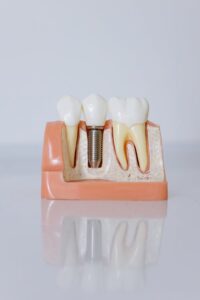
The U.S. Dental Implant Market and Final Abutment Market reached a valuation of $1.4 billion in 2022, with a projected growth to surpass $2.2 billion by 2029. The dental implant market, led by prominent players like Straumann, Envista, and Dentsply Sirona, constitutes the majority of this valuation, driven by their commitment to quality products and continuous innovation. Uncovering the drivers behind this growth and devising effective strategies to harness them can yield significant benefits for your team. In our latest blog, we explore the top three market growth drivers in the U.S. Dental Implants Market, providing valuable insights for strategic advantage.
Improved Supporting Technology
The consistent growth of the dental implant industry has sparked the emergence of advanced technologies that play a crucial role in driving its expansion. One such technology is the Cone Beam Computed Tomography (CBCT) scanner, which enables precise three-dimensional modeling of a patient’s jaw. This imaging technique provides dentists with invaluable information about the bone density and structure, leading to more accurate diagnoses and successful surgeries. Additionally, the development of computer-guided surgery software enhances the treatment planning process by leveraging the CBCT scan data. Dentists can now create precise treatment plans and utilize surgical guides for implant placement, tailored to the specific needs of each patient. The integration of CAD/CAM technology further enhances the process by allowing the production of customized final abutments, ensuring optimal stability and aesthetic results. Collectively, these advancements in supporting technology are driving the overall growth and success of the dental implant market.
Value Implant Market Growth
The value dental implant market segment is expected to undergo one of the highest CAGR’s of all the market segments. The dental implant market has witnessed a shift towards value-oriented products driven by increased price sensitivity. The distinction between premium and value segments is blurring as value brands offer comparable quality to premium implants. This trend is fueled by the growing number of general practitioners (GPs) administering implants and their openness to non-premium brands. As more dentists recognize the quality parity, the demand for value implants is expected to rise. The market segment is witnessing a surge in competition as companies like BioHorizons, Hiossen, and Megagen intensify their presence. This heightened competition within this market segment not only fosters innovation but also opens up new avenues for expansion.
Long Term Cost Efficiency
Another key driver in the dental implant market is the long-term cost efficiency they offer. Patients and dentists are increasingly recognizing that dental implants provide superior value over traditional bridges or dentures. Unlike alternative devices, dental implants are inserted into the jawbone, resulting in a significantly longer lifespan. While bridges or dentures typically last around seven years, dental implants can last a lifetime without requiring replacement. This long-term durability makes dental implants a more cost-efficient option, as they eliminate the need for frequent replacements associated with bridges or dentures.
Interested in learning more about the U.S. Dental Implant Market?
To gain deeper insights into the U.S. Dental Implant Market, including average selling prices (ASPs), market share analysis, emerging trends, and influential factors, we invite you to request a complimentary sample of our comprehensive 2023 report. Our dedicated team will promptly provide you with an executive summary to jumpstart your market research efforts.